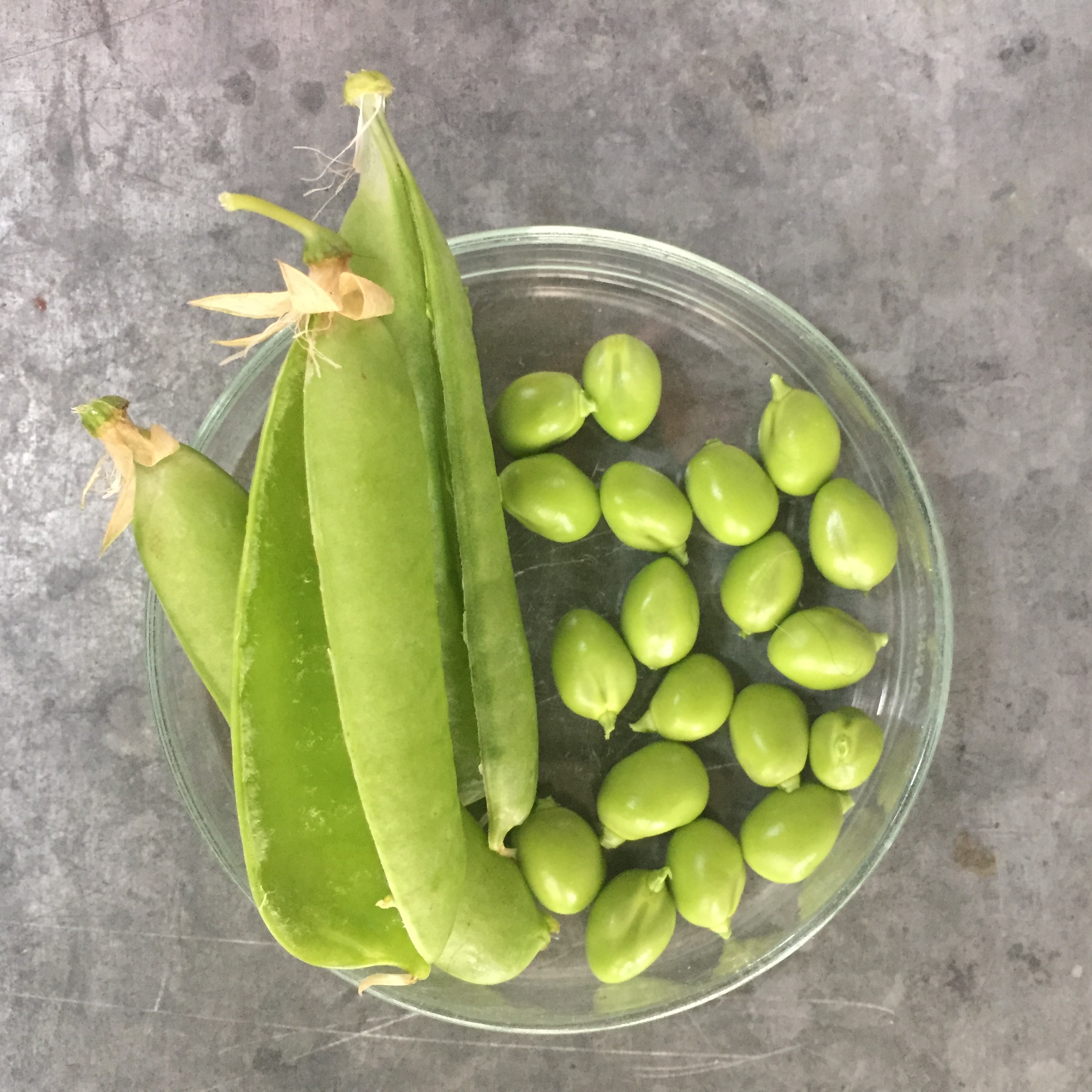Foredrag om baggrunden for Margrethes Køkkenhave på Kringsminde Museumsgård/ Background for Margrethe's Kitchengarden
All photos: Charlotte Snebæk Poulsen
Talk about project background for people connected to
Kringsminde Museum
• Date: 28. 4. 2022
• Place: Kringsminde Museum, Kringsmindevej 9, 7000 Fredericia
• Talk by: Seed Saver, Svend Erik Nielsen
• Assistant: Project manager Charlotte Snebæk Poulsen
• Participants: 16 persons listened to the talk
(7 Co-workers and volunteers, 9 members of the Danish Seed Savers)

About Margrethe Hvid and the varieties in the museum garden
By Charlotte Snebæk, project manager and member of the Danish Seed Savers
Margrethe Hvid was one of the first Danish female horticultural advisers. Her book “Køkkenurter: Dyrkning og Konservering” (Kitchen Garden Vegetables: Growing and Preserving) was written in 1943.
Her garden plan and five of the vegetable varieties recommended in the book were made into the vegetable garden at Kringsminde Musem that was named after her: “Margrethes Køkkenhave” (Margrethe’s Kitchen Garden):
- Summer cabbage ‘Copenhagen Market’
- Summer carrot ‘Nantes’/‘Nantaise”
- Beetroot ‘Spangsbjerg’
- Radish ‘Copenhagen Market’
- Marrow pea ‘Kelvedon Wonder’
- Shallot ‘Læsøløg’ - a local variety from the Danish island Læsø, dating back to the 1930s
Some of these varieties are easily bought in e.g. supermarkets, while others have been taken from NordGen and multiplied before sown in Margrethes Vegetable Garden.
You can see the garden plan here:

Three important varieties of peas
‘Witham Wonder’ is a low pea, recommended by Margrethe Hvid as better and tastier than ‘Kelvedon Wonder’, which was grown in ‘Margrethe’s Kitchen Garden’ in the summer of 2021.
Svend Erik brought samples of ‘Witham Wonder’ for the participants to try.
‘Fairbeard’s Early Nonparail’ is a tall pea, also highly recommended by Margrethe Hvid as high yielding, sweet tasting and brilliant for canning.
In the summer, 2022 we plan to grow it in ‘Margrethe’s Kitchen Garden’.

Background: studies of old Danish varieties of vegetables
Svend Erik Nielsen made a study of
• Cabbage
• Carrots, parsnips, parsley (leaf and root) and celeriac
• Onions and leek
• Beetroot and spinach
• Lettuce
• Peas
The time limit was set to 1950 when the production of F1 hybrids started.

Beetroot 'Spangsbjerg' in Margrethe's Kitchengarden
Start of the Danish breeding adventure
The Danish adventure of vegetable breeding started in the beginning of the 1500s. The Danish king Christian 2. had connections to the Netherlands. His queen Elisabeth was daughter of the king of the Netherlands … but also his mistress, Dyveke, was from the Netherlands, and her mother, Sigbrit Willems, was a merchant.
Through these connections, the Danish king invited skilled Dutch farmers to the island Amager to provide the capital, Copenhagen, with quality vegetables: cabbage, carrots, and other species, almost unknown to the Danes at that time.
The Dutch farmers and their descendants grew and improved kale, cabbage, carrots, radishes etc. by breeding for the next almost 500 years, and even today Dutch families grow and sell vegetables on the island Amager.
Until 1853 the Dutch farmers succeeded to keep the seeds from their famous cabbage: ’Amager’ to themselves. You could only buy the cabbage on the market – not the seeds!
When seeds got at last available this cabbage became the most grown winter-cabbage already in 1877, and in 1887 the seeds were introduced to the American market as ‘Danish Ball head’.
Watch the video also made in this project about Amager Cabbage.
Danish seeds from 1800 to 1950
Danish vegetable varieties are a genuine mix of varieties coming from most of Europe, especially Holland, England and Germany.
From the middle of the 18th century, it became common using the name of the variety, often a name connected to the island, the village, or the farm where the vegetable was bred and grown. The variety could also be named after a large market place, i.e. ‘Copenhagen Market’, ‘London Market’ or ‘Paris Market’ meaning, “this is what professional gardeners grow for sale!”
Not only housewives did their daily shopping at the markets. Also collectors from large companies, even from as far as America, or producers of canned vegetables bought large amounts of both vegetables and seeds. Another issue was seeds taken discreetly from the fields, when foreign farmers visited other seed companies to raise a new production of the variety, when they were back home. This resulted in big discussions of the ‘new’ variety’s identity and quality, and a great confusion began, as seed companies often gave the same varieties different names, to highlight their own seeds.
One of the foreign seed companies with great importance for Danish as well as European vegetable breeding is Gebrüder Dippe in Quedlinburg, founded in 1850. Like many Danish seed companies, Gebr. Dippe has had a difficult time since World War 2, especially as Quedlinburg was part of DDR and the company was expropriated, but third generation Dippe restarted Gebr. Dippe GmbH in BDR.
During Second World War, Danish breeders did not have proper seeds for seed production, and many varieties declined. After the war a hard work of improved breeding and testing of strains started.
The result was that by the middle of the 20th century the Danish seed production was reestablished and even improved.
Around 1950 the five to ten largest Danish seed companies began buying up the smaller. Following this, foreign companies began buying the big Danish companies, and by the beginning of the new millennium, only a few were still working in Denmark.
Thus, lots of Danish varieties of cabbages, carrots and other vegetables vanished from the market. Many were not even collected and stored in the Nordic Genebank, NordGen, or other gene banks, and are therefore forever lost.
Yet there are still many varieties to find in common trade, in gene banks, or with seed savers’ associations around the world.
Margrethe's Kitchen Garden 2021